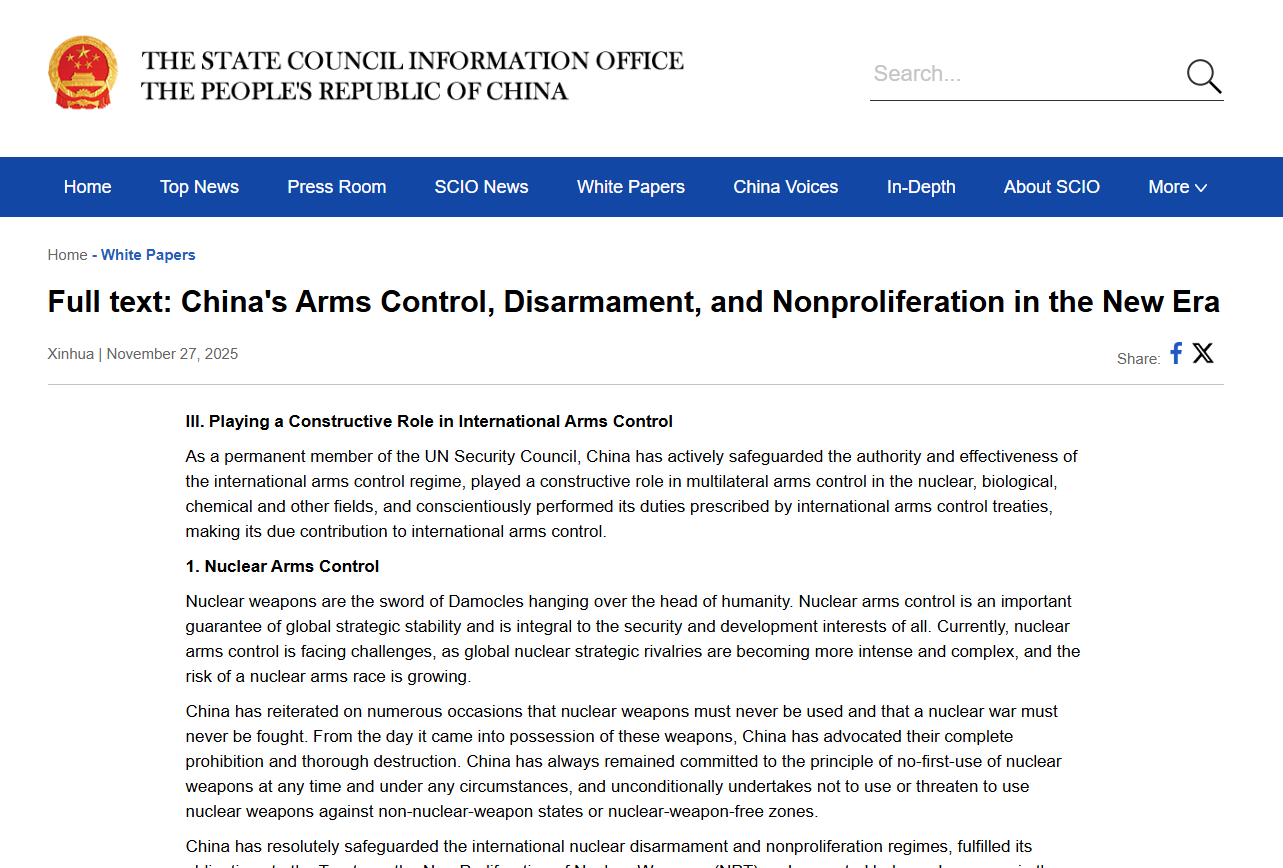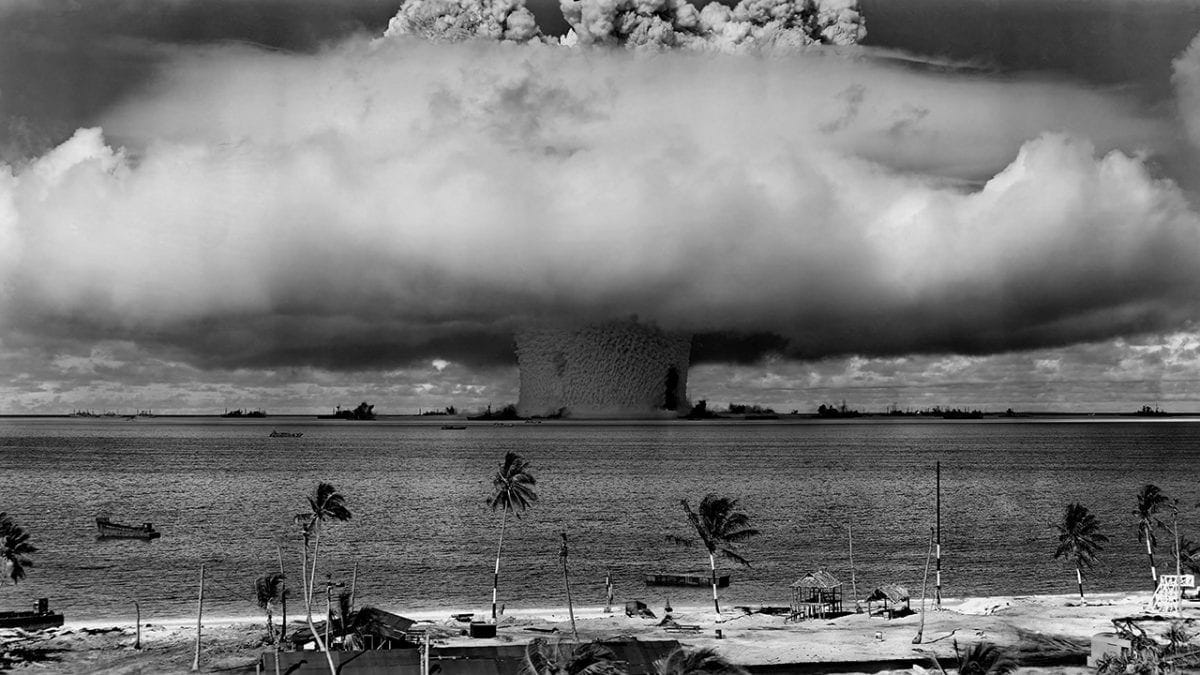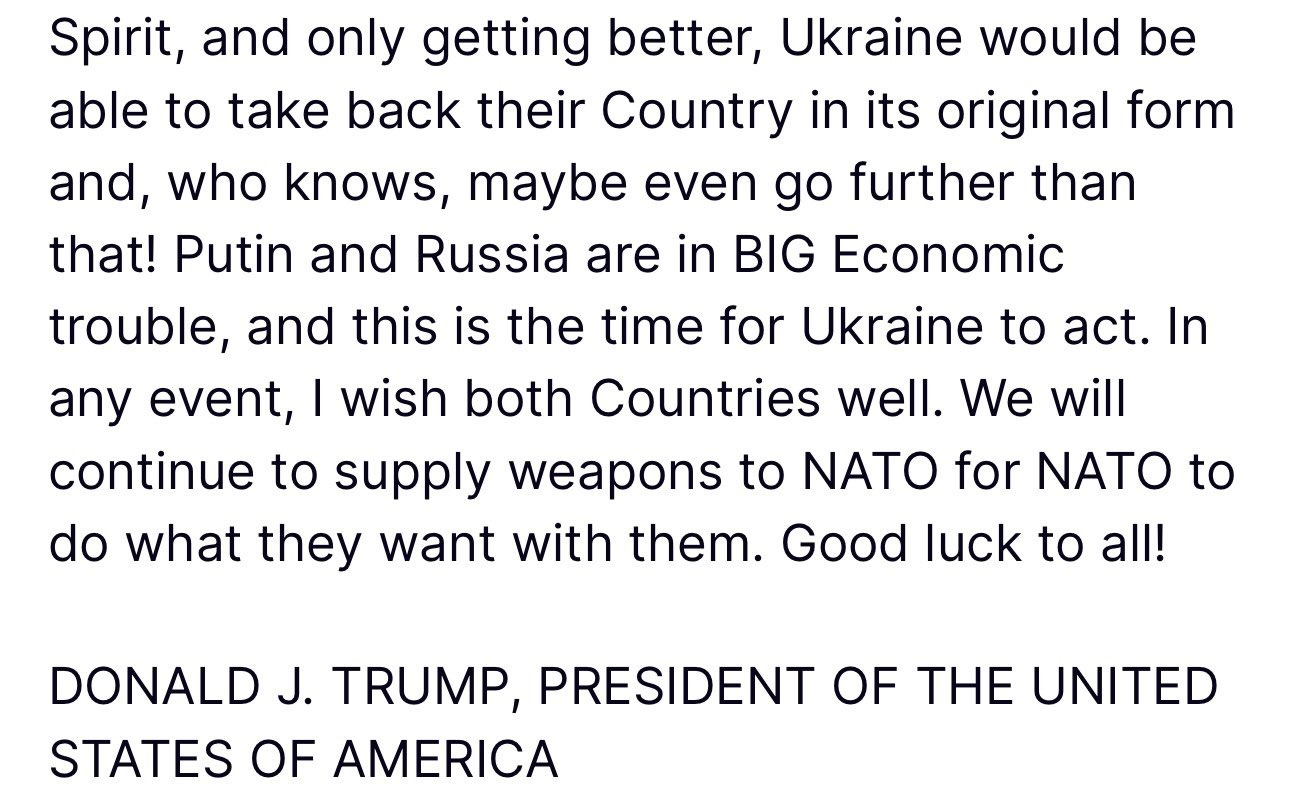Discover Strategic Simplicity Podcast
Strategic Simplicity Podcast

Strategic Simplicity Podcast
Author: Pranay Vaddi
Subscribed: 15Played: 266Subscribe
Share
© Pranay Vaddi
Description
Trying to explain new and old, arcane and obscure international security issues in a conversational format.
strategicsimplicity.substack.com
strategicsimplicity.substack.com
29 Episodes
Reverse
Heather and I discussed the 2025 CSIS PONI Project Atom Report, entitled “Escalation Management in Acute and Protracted Conflicts in the Indo-Pacific.“ Project Atom brings several authors together to propose alternative strategies for managing escalation with China. Authors provided submissions examining diplomatic risk management, conventional deterrence, regional nuclear deterrence, allies perspectives, and political stakes in a U.S.-China conflict.We veered into a wider discussion of nuclear dynamics between the United States and China, where the report submissions touched on regional nuclear capabilities which may be important for U.S. escalation management approaches, and how this could all play in NPT diplomacy. The entire report is well worth your time. Take a look here:* 2025 Project Atom report.You can also watch the launch event from this past week on the CSIS website.We’ll be back next week with an episode introducing Charlie Glaser’s new book, “Retrench, Defend, Compete.“Intro/outro music licensed by Soundstripe: “The Iron Curtain” by Wicked Cinema.Recording and edits through Riverside.fm. This is a public episode. If you would like to discuss this with other subscribers or get access to bonus episodes, visit strategicsimplicity.substack.com
I was really lucky to have Tong Zhao, a Senior Fellow with the Carnegie Endowment of International Peace, spend his late Friday afternoon with me to walk through the Chinese Ministry of Foreign Affairs new white paper on arms control, disarmament and nonproliferation. Our discussion spanned nuclear doctrine, posture shifts, multilateral arms control, and advice for early career professionals interested in U.S.-China nuclear dynamics.We discuss some of the key terms of art that appear in the document and what they may mean in the contexts of China’s transforming nuclear arsenal: ‘strike only after being struck first,’ ‘rapid response,’ ‘lean and effective,’ and ‘strategic early warning.’ Tong also helps explain the difference between ‘no first use’ and no ‘threat’ of first use - the latter being absent from China’s NFU policy and relevant to the future attempts to deter non-nuclear attacks (or, depending on your perspective in a conflict, coerce adversaries). We discuss the permanence, or lack thereof, of NFU in the midst of a crisis. Tong lists several questions experts and policy makers should make to gain greater clarification from Chinese interlocutors on China’s nuclear policies.Tong describes China’s confidence in a more “ideal” deterrence strategy, buoyed by confidence in its conventional military advantage in theater as well as broader, favorable shifts in the geopolitical balance of power including a reduced U.S. prioritization of ideological confrontation, and why that may mean China doesn’t feel much pressure to reach nuclear parity with the United States, which does and will maintain a stronger nuclear arsenal. Unfortunately, a dynamic where PRC leadership feels they’re achieving military advantage aims also alleviates any pressure to engage in constructive arms control discussions with the United States.Finally, we touch on China’s behavior and priorities in multilateral arms control fora and Tong provides advice for new professionals interested in building expertise as a practitioner or researcher in U.S.-China strategic relations and arms control. There is a lot left to cover in this white paper, but hopefully this episode serves as a primer on the core nuclear policy elements.Show notes:Here are a few documents, projects, or topics we discussed during the podcast.* Brookings Analysis of the CCP Fourth Party Plenum, 15th Five Year Plan* Arms Control Association “The Potential of the P5 Process.” Former Acting Undersecretary of State for Arms Control and International Security, Tom Countryman. * Carnegie Endowment “Miniaturization and Modernization: The Untold Story of China’s Nuclear Weapons.” Tong is hosting Dr. Hui Zhang to discuss his new book on China’s nuclear warhead development at an event on Tuesday, December 9 at 10:00 AM EST. Register here.* Foreign Policy. “Is China Changing its Nuclear Launch Strategy?” Tong Zhao.Intro/outro music licensed by Soundstripe: “The Iron Curtain” by Wicked Cinema.Recording and edits through Riverside.fm. This is a public episode. If you would like to discuss this with other subscribers or get access to bonus episodes, visit strategicsimplicity.substack.com
We finally pulled our thoughts together on the President’s recent comments regarding nuclear testing, in light of a steady drip of additional information from congress, other U.S. officials, as well as the media. After analyzing what this testing discussion is all about, we opened the mailbag to try and get through a few listener questions.In lieu of a longer summary of the podcast, I’m sharing some background information on the testing topic as it’s unfortunately very weedy on policy, legal, and technical ground… hope you enjoy:I mentioned two recent articles during our testing discussion, one from Washington Post on China’s activities around the Lop Nur test site, and another from CNN regarding DOE/NNSA officials heading to the White House to “tamp down” on the testing urge:* Cate Cadell. “China rapidly expands nuclear test site as Trump revives Cold War tension.“ Washington Post. November 17, 2025.* Ella Neilsen, Rene Marsh, Alayna Treene. “Exclusive: Department of Energy officials to meet with White House to tamp down Trump’s idea of explosive nuclear testing.“ CNN. November 14, 2025.Here are a few documents we reference directly or indirectly during the conversation.State Department Article-by-Article Analysis of the Comprehensive Test Ban TreatyLanguage to the 2020 State Department Arms Control, Nonproliferation and Disarmament Compliance Report, starting with a brief history on the U.S. “zero-yield” standard during CTBT negotiations, followed by assessments regarding PRC and Russian compliance.And similar information from the more recent 2022 Compliance Report (the Department stopped repeating unchanged information in later reports, so I’m sharing 2022 as the first full compliance report of the Biden administration, providing the updated take on testing, including the zero-yield standard, China, and Russia) This is a public episode. If you would like to discuss this with other subscribers or get access to bonus episodes, visit strategicsimplicity.substack.com
During our last conversation on U.S. nuclear strategy (about two weeks ago, primarily led by Austin Long and Charlie Glaser who have spent quite a bit of time debating damage limitation), we uncovered a few questions we just didn’t have time to address. We chose three specific questions to discuss on today’s pod, and of course, we uncovered enough interesting material to start planning a Part 3:* Is retention of a damage limitation necessary for U.S. extended deterrence strategy, and if so, how important is it for extended deterrence allies?* How comprehensive or successful does the U.S. need to be for damage limitation to be considered “meaningful”?* How important is damage limitation as a nuclear strategy objective, considering other traditional objectives (restoring deterrence, escalation management, threatening unacceptable damage, etc.)?Before we dive into these questions, however, we tried to address some recent listener feedback: What does damage limitation actually entail from an operational perspective?As we mention several times throughout the discussion, conversations on the hypothetical, though never realized, end results of U.S. nuclear strategy and objectives gets Strangelovian very quickly. We’re talking about end-of-the-world extremities in international politics, with the shared goal of ensuring U.S. strategy is designed to ensure that day never comes. You’ll hear several important themes come up—the relative political stakes of belligerents in a conflict over a third country, like a U.S. ally or partner; the importance of saving lives vs. saving the functioning state; why geography matters, etc. While we’re nuclear folks discussing much grander ideas, you will hopefully see the connections between these wonky nuclear strategy topics and broader U.S. foreign policy and national security strategy. On a lighter note, Charlie reveals the new MIT swag - the CNSP branded “nuclear umbrella” that will now form the core of the new Center’s public diplomacy efforts.Enjoy this podcast, and as always, we appreciate your feedback and questions to further our own study of and reflections on this important set of topics.Stay tuned for Part 3, where we hope to spend some time talking about current and potential adversary reactions to current U.S. nuclear strategy, among other issues.If you missed it, catch part one of this podcast series here.Suggested readings (referenced during the pod):Austin’s chapter, “Damage Limitation in the 21st Century” (p. 66), in the LLNL CGSR volume “Counterforce in Contemporary U.S. Nuclear Strategy.”Charlie’s article in The Washington Quarterly, which he co-authored with Steve Fetter, “Legal, but Lethal: The Law of Armed Conflict and US Nuclear Strategy.”Intro/outro music licensed by Soundstripe: “The Iron Curtain” by Wicked Cinema.Recording and edits through Riverside.fm. This is a public episode. If you would like to discuss this with other subscribers or get access to bonus episodes, visit strategicsimplicity.substack.com
For those of you who haven’t met Charlie Glaser, he’s truly a great contributor to nuclear policy discussions and a wonderful colleague. And we were happy to host Charlie for a discussion on damage limitation. Charlie is a prolific author on U.S. nuclear strategy and broader international security topics, having written on the infeasibility of counterforce as China’s arsenal grows, U.S. commitments to East Asia, and many many other topics. Charlie and Austin recently debated nuclear strategy at MIT for the Center for Nuclear Security Policy community, and we thought reprising and continuing this discussion on our podcast would be a great way to get their arguments out to a broader audience. Our discussion covers the relevance of either proposed approach—discarding damage limitation as an objective or maintaining and enhancing it to pace the changing security environment—to longstanding U.S. grand strategy goals, such as nonproliferation, extended deterrence, and reducing the risk of nuclear war. We also discuss conventional and theater nuclear capabilities, the possible harm to population centers, and the link between theater and strategic nuclear forces to manage escalation under either strategy approach. Charlie and Austin debate whether damage limitation capabilities create escalatory pressures, or discourage adversaries from escalating. And like good academics, we include a range of interesting research questions that would help elucidate an important debate happening in U.S. nuclear policy circles today.Much more to follow on the topic of the pros and cons of damage limitation from a regional nuclear deterrence perspective—stay tuned for Part II. Any questions? Hit us up in the comments below.EDIT: Sharing a few links to Charlie’s publications, for those interested in a deeper dive. Charles L Glaser and Steve Fetter, “Should the United States Reject MAD? Damage Limitation and U.S. Nuclear Strategy toward China,” International Security (2016).Charles L. Glaser, James M. Acton, and Steve Fetter, “The U.S. Nuclear Arsenal Can Deter Both China and Russia: Why America Doesn’t Need More Missiles,” Foreign Affairs (October 5, 2023).I’m also sharing a link which I’ve shared before; LLNL CGSR’s compendium of articles entitled “Counterforce in Contemporary U.S. Nuclear Strategy,” which contains a chapter written by Austin Long titled “Damage Limitation in the 21st Century” starting on page 66.Intro/outro music licensed by Soundstripe: “The Iron Curtain” by Wicked Cinema.Recording and edits through Riverside.fm. This is a public episode. If you would like to discuss this with other subscribers or get access to bonus episodes, visit strategicsimplicity.substack.com
Austin, Vipin, and I sat down to share our reviews of Kathryn Bigelow’s new Netflix thriller, “A House of Dynamite.” We share our analysis of the film’s plot; where the film seemed accurate in its portrayal of the nuclear war scenario, deterrence logic, basic facts of government operations; and, some of the more confusing assertions made by characters in the film. Lot’s of feelings! But we also try to highlight what seemed right and what seemed wrong based on our own experiences in government. We also share our own favorite nuclear war movies and try to answer a few listener questions and share what others said about the movie.Hope you enjoy, and please send us your own questions or comments regarding the movie in the replies below, or via email.Edit: I failed to link to Al Mouroni's Substack, which we mentioned during the pod. You can find it here:https://open.substack.com/pub/almauroni?utm_source=share&utm_medium=android&r=998hwIntro/outro music licensed by Soundstripe: “The Iron Curtain” by Wicked Cinema.Recording and edits through Riverside.fm. This is a public episode. If you would like to discuss this with other subscribers or get access to bonus episodes, visit strategicsimplicity.substack.com
Austin, Vipin and I welcome friends from the MIT Security Studies Program, Taylor Fravel and Caitlin Talmadge, to discuss China once again. This time, we focus on two oft-cited rationales for China’s nuclear build-up—the desire to improve the survivability of its nuclear forces, and the potential to use a larger nuclear forces as a fullback for regional coercion/aggression. Our guests help explain China’s motivations, the looming Taiwan scenarios, what is happening in China’s non-nuclear forces, and Taiwan’s own capabilities and attitudes regarding a conflict. Our conversation moves beyond just nuclear weapons and into the political relationship, China’s historical approach to Taiwan, competition outside of the nuclear arena, and the relevance of the broader U.S. strategy toward China to these nuclear questions.We also talk about the ability for the United States to compete in military domains that help set back the most concerning military scenarios with China, and keep the threshold for nuclear use high if a conflict was to begin. The group also discusses the limitations China may face in improving and modernizing its nuclear weapons capabilities to support a possible sea change in its approach to nuclear strategy, and whether China could become more transparent about its nuclear forces as the buildup continues, or if we’re going to hear about more new and modern windmills instead.Please feel free to send us your thoughts, comments, and questions on this topic in the replies or via email, as we’re definitely going to record a Part III in the near future and are open to suggested topics. Until then, enjoy the pod.Intro/outro music licensed by Soundstripe: “The Iron Curtain” by Wicked Cinema.Recording and edits through Riverside.fm. This is a public episode. If you would like to discuss this with other subscribers or get access to bonus episodes, visit strategicsimplicity.substack.com
Is Putin’s offer to continue adherence to New START central limits for one more year a “cost free virtue signal,” a sincere desire to manage nuclear competition, an opening to a broader conversation on strategic issues, or maybe a combination of all of these things. Additionally, what U.S. interests are at play in considering this offer? Austin and I had a great conversation with two of the top experts in the arms control policy discourse, Mike Albertson and John Warden, to try and answer these questions among others.We debate the various responses the United States could craft, the relevance of future U.S. nuclear posture adjustments to the question of maintaining New START limits for one more year, the state of New START today without verification activities, data exchanges or regular notifications, and China and trilateral arms control.Mike and John help us dig into how the U.S. government usually organizes itself to analyze an arms control, the questions senior officials and experts are probably asking, and hopefully trying to answer, and how the United States may respond. We discuss the importance of ending New START on a “good note” to preserve arms control between the two countries and pave the way to future agreements, including ones that manage competition between the two countries and help shape future force posture decisions on each side. The Ukraine war looms large still today, and we talk about how that may play into considerations of Russia’s offer as well as other sources of leverage in arms control negotiations.Throughout the conversation, the one area of agreement that surfaces is that all four of us think the United States needs to make a counter proposal to Putin’s offer, using the next four months to engage in a serious arms control policy process to establish U.S. priorities and consider how to engage Russian counterparts. We’ll have to see whether U.S. officials feel the same way and Russia is willing to use this offer as a starting point for that conversation, as opposed to accepting a fait accompli.Intro/outro music licensed by Soundstripe: “The Iron Curtain” by Wicked Cinema.Recording and edits through Riverside.fm. This is a public episode. If you would like to discuss this with other subscribers or get access to bonus episodes, visit strategicsimplicity.substack.com
Toby Dalton, Francesca Giovannini, and Eric Brewer, experts and leaders with the Carnegie Endowment of International Peace, Harvard University Belfer Center Initiative on Managing the Atom, and Nuclear Threat Initiative, staffed the Task Force on Nuclear Proliferation and U.S. National Security for the past 10 months. They recently drafted and published a final task force report entitled “Preventing an Era of Nuclear Anarchy: Nuclear Proliferation and American Security.”The Task Force, chaired by Ernie Moniz, Tino Cuellar, and Meghan O’Sullivan, is comprised of an impressive array of former officials across the national security bureaucracy and branches of government, and examined the foundations of U.S. national security policy to prevent the spread of nuclear weapons. In many ways, the Task Force is spiritual sequel to the 1964 Committee on Nuclear Proliferation, often called the “Gilpatric Committee” or “Gilpatric Task Force” after Deputy Secretary of Defense Roswell Gilpatric, the chair of the committee. (you can find the original Gilpatric report in its declassified glory at the Department of State’s Office of the Historian, here).Our discussion examined several fundamental questions relevant to nuclear policy, counterproliferation, nonproliferation, extended deterrence, arms control, and other issues, including:* Why and how U.S. national security approaches to preventing the spread of nuclear weapons need to change in an era of changing politics, technology, and military capabilities;* How to spotlight the prevention of the spread of nuclear weapons as a core, and once-again emerging challenge to U.S. national interests;* The necessity of U.S. leadership and international engagement to maintaining the track record of success in preventing nuclear proliferation, both to assure U.S. allies who benefit from extended deterrence guarantees, reduce risks with major power competitors, and to discourage proliferation; * What a strong U.S. nuclear industry can offer to the nonproliferation toolkit;* Why the United States needs to manage tensions between nonproliferation objectives and nuclear deterrence, such that the two worlds do not become mutually exclusive;* How the security environment today is different from that of the 1960s in terms of the competition among major powers, availability nuclear technology, and state of political relationships; and,* The importance of domestic and international institutions and expertise in meeting increased risks of nuclear proliferation… among many other issues.We also discuss some inside baseball: how the task force meetings were organized on various topics, how task force members stayed focus on the proliferation problem while taking into account the near-daily shifts in the contemporary domestic and international politics, and trying to drive the task force toward establishing enduring, high-level findings and recommendations rather than something with a short term focus. I hope you’ll enjoy this conversation, and use it as a primer for reading the report itself. The Task Force roster is incredibly impressive, and not surprisingly, the report is well worth your time.We’ll be back again next week with a new episode.Intro/outro music licensed by Soundstripe: “The Iron Curtain” by Wicked Cinema.Recording and edits through Riverside.fm. This is a public episode. If you would like to discuss this with other subscribers or get access to bonus episodes, visit strategicsimplicity.substack.com
Ankit, Vipin, and I discussed U.S.-ROK-DPRK affairs after recent comments by President Lee at the U.N. General Assembly, the ROK’s “E.N.D.” policy rollout, U.S. immigration and trade actions, and DPRK activities. Ankit and Vipin recently traveled to Seoul and shared insights gained during their trip on the state of extended deterrence discussions between the United States and South Korea, as well as pending issues surrounding ROK STRATCOM, wartime OPCON transfer, the state of the ROK and DPRK militaries. In the context of E.N.D., we discuss what reasoning with North Korea may look like for the Trump administration—including the kinds of risk reduction asks the U.S. may make of KJU— as it finalizes the National Defense Strategy and considers North Korea policy. We also talk about the state of North Korea’s nuclear program, including the reliability of its ICBMs and reentry vehicles, after recent comments by ROK President Lee. Ankit describes how far the DPRK nuclear prograb has come in the past several years, particularly since the Trump administration’s last attempts at diplomacy in 2017 in partnership with Moon Jae-In. He describes how North Korea’s arsenal and strategy create different potential military scenarios today compared to the past, and how that influences U.S. extended deterrence diplomatic aims (extra credit to Ankit for recalling the “B61s as wedding rings” comparison made by a former defense official.).The three of us discuss the relationship between political succession in North Korea and the likelihood of conflict/military aggression. We end with a discussion about how stable the Korean peninsula is today compared to a few years ago, following strengthened extended deterrence, policy shifts in Seoul and Pyongyang away from unification, and military technology advancements in North Korea. Intro/outro music licensed by Soundstripe: “The Iron Curtain” by Wicked Cinema.Recording and edits through Riverside.fm. This is a public episode. If you would like to discuss this with other subscribers or get access to bonus episodes, visit strategicsimplicity.substack.com
One of the most rewarding aspects of government service is the opportunity to meet amazing, highly qualified and well-respected experts and leaders, and work alongside them in some of the most stressful circumstances. Celeste Wallander is one of those expert-leaders to these three nuclear musketeers (Team Title WIP, and no, this isn’t a new nuclear weapon idea that Austin came up with.). She is currently the Executive Director of Penn Washington, the University of Pennsylvania’s office in Washington D.C. Prior to that, she served in multiple roles in government at the Department of Defense and White House, including most recently as the Assistant Secretary of Defense for International Security Affairs and a stint as Senior Director for Russia and Eurasia at the National Security Council under President Obama.We tried to cover recent news on the Russia and Europe front in this episode, starting with drone/aircraft incursions into NATO member airspace, President Trump’s comments at the United Nations General Assembly this week regarding Ukraine’s ability to win…Trump, in major shift, suggests Ukraine can win back territory long held by Russia…and European leaders reaction to those remarks:Top EU diplomat warns Trump that Europe can’t shoulder Ukraine war burden aloneTusk issues stark reality check about Trump’s pro-Ukraine pivotWe close our planned discussion with a conversation about President Zelensky’s statement that “the world was living through the most destructive arms race in human history” and stakes of various parties in the Ukraine conflict.We save a few minutes at the end to talk about Putin’s recent offer regarding New START, which I wrote about here earlier this week. I also want to offer perspectives other than my own, provided by friends in the nuclear community, which you should also read:Jon Wolfsthal: “Why President Trump should put off the new nuclear arms race for one more year“ The Bulletin.Matt Bunn: “Putin just gave Trump the opportunity to maintain nuclear restraint. Will he seize it?“ The Bulletin.Austin Long: “No Zombie Nuclear Treaties.” Strategic Simplicity.Hope you enjoy the podcast and have a joyous weekend. We’ll be back next week with 2 episodes. This is a public episode. If you would like to discuss this with other subscribers or get access to bonus episodes, visit strategicsimplicity.substack.com
Tom Karako, a scholar at the Center for Strategic and International Studies, shares his new paper on the Missile Technology Control Regime (MTCR), entitled “A Marie Kondo Moment for MTCR: Tidying Up the U.S. Approach to Missile Proliferation.“ Tom recommends that the U.S. government find a way to overcome the “strong presumption of denial” at the core of MTCR in order to better develop allied and partner capabilities in an age of proliferated missile and drone systems, particularly among adversarial nations. He authoritatively covers the strategic environment of 1987, when the G7 first developed MTCR, compared to the world of today. Ola, Austin and I share our perspectives on MTCR, nonproliferation trends, and where strategic dynamics may require changed thinking in U.S. defense trade.If you’re interested in why the Marie Kondo reference makes so much sense, maybe you need to binge Netflix reality shows more frequently. We also cover recent actions by the Trump administration to treat unmanned aerial systems (UAS) as aircraft, not missiles, for the purposes of U.S. export controls, and what that could mean for U.S industry and allies seeking new UAS capabilities. As part of the discussion, we also recap actions taken by the Biden administration in January 2025 to preserve MTCR but unilateral adapt U.S. implementation to create more opportunities for U.S. missile technology exports to close allies and where AUKUS lessons may provide a model for a future MTCR that works for the U.S. and its alliance system, not against it.Please take a moment to read Tom’s paper, which can be found at the hyperlink below:* “A Marie Kondo Moment for MTCR: Tidying Up the U.S. Approach to Missile Proliferation.“Intro/outro music licensed by Soundstripe: “The Iron Curtain” by Wicked Cinema.Recording and edits through Riverside.fm. This is a public episode. If you would like to discuss this with other subscribers or get access to bonus episodes, visit strategicsimplicity.substack.com
Austin, Vipin and I welcomed Taylor Fravel and Caitlin Talmadge to the Strategic Simplicity Podcast to talk about China. While I was hoping we would could make this THE definitive China episode, we realized as the conversation began just how much more we have to unpack and explore on this topic. Stay tuned for a Part II (and maybe a Part III!) in the coming weeks.Our podcast covered some of the higher order motivations in China for a large nuclear arsenal, how those motivations may have changed over time as the recent buildup began in earnest, whether Chinese explanations of seeking a secure second strike capability credibly explain certain capability developments, and we also talk about China’s nuclear posture changes in the context of broader trends in the U.S.-China relationship, political changes in Beijing, economic growth, its foreign policy objectives, and increases in its relative military power in the U.S.-China competition. Throughout the conversation we reference China’s recent military parade, including the development of theater nuclear weapons, intermediate-range dual-capable missiles, and silo-based ICBMs. We also touch on the ebbs and flows in U.S.-China relations over the past several years, and how China viewed and perhaps reacted to changing (and more transparency in) policies in the United States and Taiwan in developing its nuclear and other military capabilities. If you’re interested in doing your own deep dive….some suggested reading below. Taylor and Caitlin are prolific writers in addition to being amazing scholars and professors, and I can’t recommend their publications strongly enough for listeners who are interested in learning more (and there are of course many more than i’ve chosen to post below). I’ve also thrown a few recent works by Austin, Vipin and I which many of you may have already read.* “China's Search for Assured Retaliation: The Evolution of Chinese Nuclear Strategy and Force Structure.” Journal of International Security. Evan Medeiros and Taylor Fravel (open access link).* “The Meaning of China’s Nuclear Modernization.” Journal of Strategic Studies. Caitlin Talmadge and Josh Rovner.* “Counterforce in Contemporary U.S. Nuclear Strategy.” Center for GLobal Security Research at the Lawrence Livermore National Laboratory. Edited by Brad Roberts. Austin’s article “Damage Limitation in the 21st Century” is located on page 66.* “How to Survive the New Nuclear Age.“ Foreign Affairs. Vipin Narang and Pranay Vaddi. Intro/outro music licensed by Soundstripe: “The Iron Curtain” by Wicked Cinema.Recording and edits through Riverside.fm. This is a public episode. If you would like to discuss this with other subscribers or get access to bonus episodes, visit strategicsimplicity.substack.com
Austin, Vipin, and I suspended our unilateralist approach to choosing podcast topics for one recording session, instead taking on questions and comments that you listeners/readers sent to us. Thank you for being willing to engage, on pretty short notice, on a wide array of topics. We will definitely do this again, so please keep sending in your thoughts!I’m not going to list every question we received, but they ran the gamut of nuclear policy topics. We discussed China’s military parade, Pakistan’s long-range missile program, counterforce and negotiating war termination, advice for new/early-career participants in the nuclear field, and reflected on “surprises” we experienced during our careers in government.Intro/outro music licensed by Soundstripe: “The Iron Curtain” by Wicked Cinema.Recording and edits through Riverside.fm. This is a public episode. If you would like to discuss this with other subscribers or get access to bonus episodes, visit strategicsimplicity.substack.com
I really enjoyed this conversation with Lowell Schwartz, a former Deputy Assistant Secretary of State for Nonproliferation Policy, who joined the podcast to talk about the role Congress plays in overseeing arms control and nuclear policy. I’m glad we were able to get Lowell’s perspective on the opaque world of executive-legislative branch relations, particularly on national security issues, and who better to offer insights on this topic than a former senior professional staff member of the Senate Committee on Foreign Relations, who managed the WMD portfolio.We talked about the New START and nuclear modernization compromise, how a staffer approaches oversight of the executive branch on these issues, and Lowell’s experience on the Senate Foreign Relations Committee. In addition to New START, we talked about the politics surrounding JCPOA negotiations on Capitol Hill, how to ask nicely for briefings from the Department of State, and the comparative advantages the executive branch has over Capitol Hill on the foreign policy, military and technical topics involved in arms control policy.We also talk about the relevance of public support for arms control and defense spending decisions, Golden Dome, SDI, and missile defense politics historically, and the prospects for arms control with Russia and China today. Lowell and I also spent some time talking about the rationale for arms control, what aspects of arms control policy members of Congress and Senators may find important, and how historical arms control oversight on Capitol Hill—and deal-making involving defense spending and arms control limits—may relate to any contemporary effort to approve a new treaty. Finally, we end with a discussion about how far Congress can go with spending to modernize and possibly grow the arsenal in future without an arms control path to control costs down the road (and how hard that looks right now given relations with potential arms control partners).Read Lowell’s writing on domestic and international politics at his Substack, “A New Sense of Freedom.“Intro/outro music licensed by Soundstripe: “The Iron Curtain” by Wicked Cinema.Recording and edits through Riverside.fm. This is a public episode. If you would like to discuss this with other subscribers or get access to bonus episodes, visit strategicsimplicity.substack.com
We had a long, detailed conversation across a host of policy issues that impact arms control policy, diving into his long career as a DoD and NSC official from the late 80s into the early 2000s, overseeing the policy process that supported negotiated reductions in U.S. and Russian nuclear forces for two decades. Here’s a quick list of the topics we covered:* The relationship between parity as a policy objective vs. deterrence requirements;* The potential for an “interim restraint” in continuing New START limits constraining modernization, force posture adjustments, breaking comity among the various USG entities involved in nuclear modernization, and/or diminish negotiating leverage; * How deterrence requirements can and should inform an arms control position;* His experience leading a SIOP review starting in the late 1980s, how U.S. officials began prioritizing targets in furtherance of U.S. nuclear strategy, and how these efforts helped lay groundwork for the START process;* what an “all-warheads” agreement could look like between the US and Russia that takes into account deterrence requirements AND politics;* the concerns expressed regarding a lapse of New START without replacement (or perhaps replacement with an agreement that permits a larger deployed arsenal) and good arguments and goals for future arms control; * the impact of national interests and personalistic leadership in arms control diplomacy; * strategies to try and bring China into arms control discussions;* the direction of travel on U.S.-Russia relations, the Russia/Ukraine conflict, security guarantees and NATO, and the impact of these issues on U.S. nuclear policy-making in the USG right now; and, * Where Golden Dome may fit into all of these arms control policy considerations.We end with a little bonhomie in calling for experts across national security disciplines to come together and integrate their perspectives to tackle these important deterrence and arms control questions moving forward.Intro/outro music licensed by Soundstripe: “The Iron Curtain” by Wicked Cinema.Recording and edits through Riverside.fm. This is a public episode. If you would like to discuss this with other subscribers or get access to bonus episodes, visit strategicsimplicity.substack.com
We have a wide-ranging episode to cover the current events wavefront, touching on Vipin’s recent trip to Australia and the state of extended deterrence in the Indo-Pacific, the self-determined end of Russia’s self-imposed purported “moratorium” on INF-range missiles, and how tomorrow’s US-Russia head of state meeting may influence arms control and nuclear deterrence topics—including the dynamics around New START and a potential successor. In our New START/summit discussion, we discuss the relevance of U.S. nuclear modernization (not just the substance, but the schedule), the U.S.-Russia relationship, Russia’s recent arms control record, deterrence requirements with China, and the interagency back-and-forth involved in arms control policy-making, to frame what a new “deal” after New START could look like between the U.S. and Russia. We even end up agreeing(?) on the possible outlines of a future agreement, while all reserving the option of changing our views on a whim. (Note: our discussion regarding the Anchorage Summit may be dated, as we recorded this conversation on Friday, 8/8).The only thing better than AI experts talking about nuclear deterrence are three nuclear experts trying to talk about AI. To this end, Austin, Vipin, and I close with a brief discussion of a recent Foreign Affairs article that touches on both worlds, called “The End of Mutual Assured Destruction.” We talk about whether and how AI advancements are different from past technology-focused research that declared the end of MAD, technological developments that stressed concepts of stable deterrence during the Cold War and how they relate to future pressures AI may create on strategic stability, and whether the U.S. government is well-structured to meet issues that arise at the AI and nuclear policy nexus.Finally, we preview some forthcoming work on proliferation latency versus breakout strategies—drawing Iran, Libya, and North Korea lessons—and summarize some of the work ahead as the three of us prepare for the launch of the MIT Center for Nuclear Security Policy this fall.Intro/outro music licensed by Soundstripe: “The Iron Curtain” by Wicked Cinema.Recording and edits through Riverside.fm. This is a public episode. If you would like to discuss this with other subscribers or get access to bonus episodes, visit strategicsimplicity.substack.com
I was happy to host a one-on-one conversation with Alexandra Bell, President and CEO of the Bulletin of Atomic Scientists, a couple of weeks ago. She offered a glimpse into what a career in nuclear risk reduction and arms control really looks like in and out of government. Hopefully this offers some insights to early career professionals thinking about their next steps.Alex and I talked about her recent experience in government, leading the State Department’s arms control bureau in the early days of the Biden Administration to kick start diplomatic processes to extend the New START Treaty, begin a strategic stability dialogue with Russia, and revitalize the P5 Strategic Stability process. We also discussed the first U.S.-China arms control and nonproliferation consultation in November 2023, and the prospects for bilateral risk reduction. Alex helps highlight the nitty gritty nature of setting up successful diplomatic processes, and how persistence may be the most important attribute for a diplomat trying to advance risk reduction dialogue with major power adversaries. We also talk about arms control as a profession, and how practitioners slowly build expertise and accomplishments over time, learning lessons from in and out of government. Alex also describes the slightly different (and challenging) nature of multilateral diplomacy, compared to New START and other areas of arms control policy work, and the importance of being an optimist in the field of managing nuclear risk. We also touch on current events, including President Trump’s interest in nuclear arms control, the value of unorthodox approaches to arms control, and prospects (and painful environment) for arms control with Russia as New START’s expiration and the rest of the world’s expectations for U.S.-Russia arms control.Finally, we talk about the Bulletin’s origins and role as a media organization in the nuclear discourse and debates taking place among experts and the public, particularly in an information environment characterized more by tribes, and the need to overcome political differences to find solutions to the most urgent nuclear risks. Alex and I also discuss the importance of the next generation of nuclear professionals, the value of development programs like those at CSIS PONI, and the need for resilience and creativity in new entrants to the field along with some other advice for young pros. We spend a little time talking about the influence of social media on nuclear debates and education, and how to measure “success” in nuclear policy these days. Alex describes a new short story fiction contest at the Bulletin that listeners should check out here.Somehow, we slide a Battlestar Galactica quote into the conversation and the importance of pop culture to increasing interest in reducing existential risks in the world. So say we all.Intro/outro music licensed by Soundstripe: “The Iron Curtain” by Wicked Cinema.Recording and edits through Riverside.fm. This is a public episode. If you would like to discuss this with other subscribers or get access to bonus episodes, visit strategicsimplicity.substack.com
Vipin and I welcome Austin Long, a former deputy director for strategic stability on the U.S. Joint Staff (J5) to the pod, and as a new Senior Fellow with MIT’s Center for Nuclear Security Policy. We had a wide-ranging discussion on* the recent UK-France joint statement on nuclear deterrence and the possible areas for the two allies to cooperate and implement the “Northwood Declaration” moving forward, * reactions to our Foreign Affairs article “How to Survive the New Nuclear Age”—including critiques of the U.S. retaining a damage limitation objective in its nuclear strategy,* the kinds of modest changes to future U.S. nuclear posture that may be prudent given China’s breakout and also in support of a new arms control deal with Russia,* The Washington Naval Conference (???) and pursuing strategic arms control in a period of global rearmament, * potential shifts to U.S. extended deterrence and allied assurance approaches,* how Austin hopes to spend his time as a new former government official (explaining damage limitation), and* . nuclear modernization “stretch goals.”A few items we referenced during the show:“Northwood Declaration.” July 10, 2025 Press release on UK-France joint nuclear statement.“How to Survive the New Nuclear Age.” Foreign Affairs.“Optimal Deterrence” by James Acton. CFR. “Counterforce in Contemporary U.S. Nuclear Strategy.” CGSR Occasional Paper. Brad Roberts, et al.“A New Nuclear Age: The Sum of All Fears.” Net Assessment podcast at Stimson.org.Intro/outro music licensed by Soundstripe: “The Iron Curtain” by Wicked Cinema.Recording and edits through Riverside.fm. This is a public episode. If you would like to discuss this with other subscribers or get access to bonus episodes, visit strategicsimplicity.substack.com
Ola and I talk about the Biden administration’s National Security Memorandum on Missile Technology Exports, the new Trump administration executive order, MTCR implementation and defense trade streamlining more generally. We summarize our recent article (link below at CSIS), and discuss the balance between protecting missile technologies and discouraging allies from pursuing nuclear weapons or other defense trade partners, how allies and industry engage the U.S. government to discuss defense technology cooperation and the barriers they face, and how the deteriorating security environment, technological advancement, and USG’s desire for allies to bolster their own defense capabilities created an interesting moment for reviewing export control approaches during our stint in the Biden NSC.We also discuss the impacts MTCR policy reforms will have on commercial space cooperation. Missiles for military purposes and space launch vehicles (e.g., missiles are missiles) were treated in exactly the same way under the USG’s implementation of MTCR; the Biden NSM sought to separate the review of space launch vehicles and related technologies from missiles used for a defense end-use. Finally, we try to forecast the defense trade streamlining priorities of the Trump administration, including FMS reform efforts that may begin under the President’s new E.O. and “pie in the sky” ideas.In lieu of a more detailed summary of the podcast, I’m sharing a longer-than-usual reading list (below the image and subscribe button below) for anyone interested in further background on MTCR and related export control issues. Reading List:MTCR Basics* Department of State factsheet: “Missile Technology Control Regime (MTCR) Frequently Asked Questions“* FACT SHEET: Biden-Harris Administration Introduces New Guidance for Missile Technology Exports to Advance Nonproliferation Goals and Bolster Allied Defense Capabilities (Biden Administration, January 7, 2025).* Executive Order: Reforming Defense Sales to Improve Speed and Accountability (Trump Administration, April 9, 2025).* Trump Administration 2020 UAS Policy: “Trump Administration Approves Updated Unmanned Aerial System (UAS) Export Policy“CSIS* Ola Craft and Pranay Vaddi. “Revising Missile Controls Is Necessary to Help Allies and Prevent New Nuclear States” (2025)* Audio version* Sean Wilson. “Missile Technology Control Regime Reform: Key Changes and Next Steps“ (2025)* Audio version Arms Control Association* “U.S. Reinterprets MTCR Rules” (2020)* Van Vann Diepen. “Missile Technology Decontrol Proposals Are Counterproductive“ (2024)* Van Vann Diepen. “Biden Loosens Missile Technology Export Controls” (2025)* “The Missile Technology Control Regime at a Glance“Congress* Huizenga/McCaul: “Huizenga, McCaul Introduce Legislation to Modernize Missile Technology Export Controls“ (2025)USSC * William Greenwalt and Tom Corben. “AUKUS enablers? Assessing defence trade control reforms in Australia and the United States“ Press* Allyson Park. “U.S., U.K., Australia Still Ironing Out Tech, Info Sharing Kinks.“ National Defense Magazine.I also encourage you to follow the work of Fabian Hoffman, who is spending a lot of time and effort analyzing European defense industrial base issues, including conventional missile production and conventional deterrence. [ Fabian Hoffmann ]See his work at Missile Matters: Intro/outro music licensed by Soundstripe: “The Iron Curtain” by Wicked Cinema.Recording and edits through Riverside.fm. This is a public episode. If you would like to discuss this with other subscribers or get access to bonus episodes, visit strategicsimplicity.substack.com
























